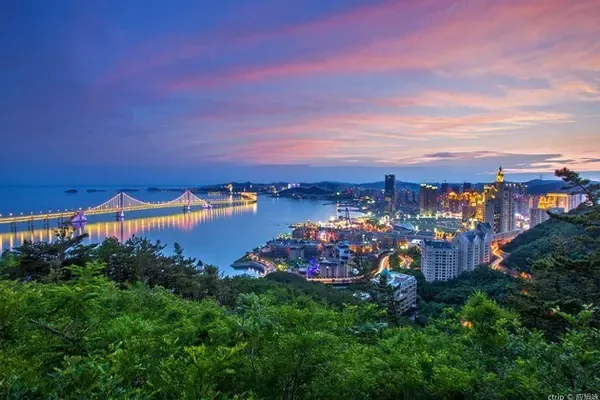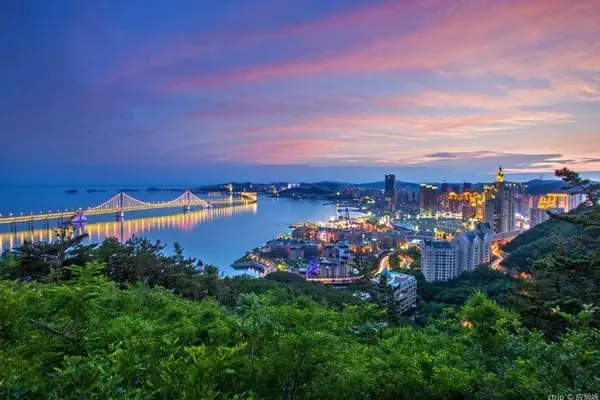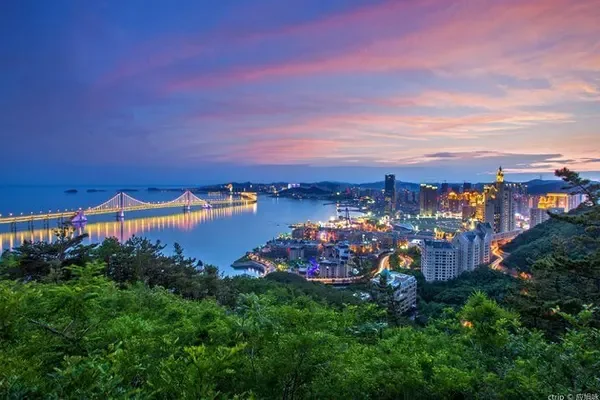Give me a month to see the five thousand years of Shanxi, Jinshan and Jinmei, and drive around Shanxi: the ancient city of Pingyao in Jinzhong, the Qiao Family Courtyard, the Wang Family Courtyard, the Cao Family Courtyard, and the Qu Family Courtyard [May 2020 Departure on the 18th]
Do you know Shanxi?
You know, in northern China...
Do you know Shanxi business card?
You know, the coal mines in Shanxi...
Do you know people from Shanxi?
You know, Shanxi Merchants...
This is my only superficial understanding of Shanxi. When it comes to Shanxi, the first reaction is coal mines, the Yellow River, and loess. As everyone knows, Shanxi carries the 5,000-year history and civilization of China, and generations of Shanxi merchants are also working hard all over the world. The scenery of Shanxi is even more beautiful.
Preface;
Jinzhong City:
Jinzhong is located in the middle of Shanxi Province. As one of the birthplaces of Chinese national culture, Jinzhong has profound cultural and historical heritage, numerous cultural relics and historic sites, and rich natural resources. The famous world cultural heritage of Pingyao Ancient City is located in Jinzhong City. In addition to a large number of historical and cultural relics represented by Pingyao Ancient City, Yuci Old City, and Qiao Family Courtyard, the three national forest parks of Zuoquan Longquan, Shouyang Fangshan, and Yuci Wujin Mountains are also important natural tourism resources in Jinzhong.
Pingyao Ancient City, Jinzhong City:
The ancient city of Pingyao is located in Pingyao County in the central part of Shanxi Province. It was built in the period of King Xuan of the Western Zhou Dynasty (827 BC-782 BC). Pingyao, Shanxi is known as one of the "four most well-preserved ancient cities", and it is also one of the only two ancient cities in China that successfully declared the world cultural heritage with the entire ancient city. The ancient city of Pingyao is an outstanding example of Chinese Han nationality cities in the Ming and Qing Dynasties. In the development of Chinese history, it shows people an extraordinary and complete picture of the Han nationality's cultural, social, economic and religious development.
Memory: For Qingdao people who come from the seaside, maybe they have seen the beauty of the sea for too long, and the attraction of the sea is not so strong anymore. I always look forward to the scenery of the ancient city of Jinzhong and Pingyao. I yearn for the long history and beautiful scenery of the ancient city of Jinzhong Pingyao. The unforgettable Jinzhong food always affects and attracts me. The wonderful imagination that travels through time and space forces me to embark on this mysterious journey.
Overview of the itinerary;
person; couple
Way: self-guided tour
means of transportation; self-driving car
Cost: 300 yuan per person (including gasoline, highway fees, board and lodging fees, tickets, etc.)
In that year, I drove to Shanxi by myself, and arranged for the trip to Jinshan and Jinmei; departure from Qingdao——Yangquan, Shanxi—Taiyuan, Shanxi—Datong, Shanxi—Xinzhou, Shanxi——Shanxi Jin Zhongshi --- Linfen City, Shanxi --- Changzhi City, Shanxi --- Jincheng City, Shanxi --- Jiaozuo City, Henan --- Dengfeng City, Henan --- Lankao City, Henan --- Qingdao
For the ancient city of Pingyao in Jinzhong, I knew very little before I went there. I drove to the ancient city of Pingyao in Jinzhong to visit the ancient city of Pingyao in Jinzhong. I went straight all the way to the southwest. The beautiful scenery along the way and the bits and pieces of the city and rivers made my heart full. revel. Started the trip to the ancient city of Pingyao in Jinzhong.
This is the most suitable place for couples to travel, stroll together, and interpret the magnificent and dynamic landscapes in nature. Appreciate the beautiful scenery surrounded by undulating peaks and verdant forests, taste the delicious food of Jinzhong Pingyao ancient city, walk along the riverside roads of Jinzhong Pingyao ancient city at night, and have a panoramic view of Jinzhong Pingyao ancient city.
【text】
1. The origin of the ancient city of Pingyao in Jinzhong
Although I have been to Shanxi twice before, I traveled with a tour group, so I was not free and restricted. For several years, I have wanted my husband and wife to travel all over Shanxi by car in a month. After the Spring Festival this year, I made a self-driving travel plan in Shanxi; in May, the most beautiful season in Shanxi, the couple went all the way to the northwest to see the scenery of Shanxi. Breathe the air of Shanxi, taste the delicacies of Shanxi, and settle your pride.
2. Preparation for departure
There is no reason to worry about it, just take a walk-and-go trip. For the trip, make all kinds of preparations for departure, understand the weather conditions at the destination, and make a list of the items you need.
Three, self-driving Shanxi, Jinshan Jimei, Pingyao ancient city tour itinerary;
Day1: Jinzhong Pingyao Ancient City, Qiao Family Courtyard
Day2: Jinzhong Wang Family Courtyard, Cao Family Courtyard, Qu Family Courtyard
Travel information:
1. Self-driving trip [Xiyang Dazhai Brigade---Pingyao Ancient City]
On June 2, 2020, the Xiyang Dazhai Brigade departed at 06.00 and arrived at Pingyao Ancient City at 12.00 on June 2, 2020, with a mileage of 210 kilometers and a driving time of 5 hours.
If you have any questions about travel, feel free to leave a message to me
memory:
Self-driving in Shanxi, Jinshan Jimei Tour, Jinzhong Pingyao Ancient City self-guided tour route essence:
The moment you lower your head, you realize the road under your feet. There are no wings left in the sky, but there are birds flying
Day1: Shanxi Jinzhong Pingyao Ancient City
The ancient city of Pingyao is the most well-preserved ancient county in China. It is an outstanding example of Chinese Han nationality cities in the Ming and Qing Dynasties. In the development of Chinese history, it has shown people an extraordinary culture, society, economy and religion. A complete picture of development.
Pingyao Ancient City
Pingyao Ancient City
Pingyao Ancient City
Pingyao Ancient City
Pingyao Ancient City
Pingyao Ancient City
Pingyao Ancient City
Pingyao Ancient City
Pingyao Ancient City
Pingyao Ancient City
Pingyao Ancient City
Pingyao Ancient City
Pingyao Ancient City
Pingyao Ancient City
Pingyao Ancient City
Pingyao Ancient City
Pingyao Ancient City
Pingyao Ancient City
Pingyao Ancient City
Pingyao Ancient City
Pingyao Ancient City
Pingyao Ancient City
Pingyao Ancient City
Pingyao Ancient City
Pingyao County Government is one of the four well-preserved ancient government offices in China, and it is also the largest existing county government in the country. The entire building complex of the county government is orderly, patchwork, reasonable in structure, and is an organic whole. On May 19, 2004, when the 11th Panchen Lama visited the county government for inspection, he happily mentioned: "The ancient government of Pingyao County most".
Pingyao County Government
Pingyao County Government
Pingyao County Government
Pingyao County Government
Pingyao County Government
Rishengchang Bank was established in the third year of Daoguang in the Qing Dynasty (1823). It was co-founded by Li Dajin, a wealthy businessman in Xidapu Village, Pingyao County, Shanxi Province, and Lei Lutai, the general manager.
The head office of Rishengchang Bank is located in the south of Xidajie Road, a bustling market in Pingyao County, Shanxi Province. It covers an area of more than 1,600 square meters, with compact land and distinct functions. It is the first of its kind in China's national banking industry. The economic lifeline of the Qing Dynasty.
Rishengchang bank has branches in more than 30 cities across the country, as far as Europe, America, Southeast Asia and other countries, and is famous for "connecting the world".
Rishengchang Bank
The Confucian Temple is the Temple of Confucius, a place where Confucius is worshipped. Pingyao Confucian Temple is located in the southeast corner of Pingyao County. It was built in the early years of Zhenguan in Tang Dynasty. Its Dacheng Hall was rebuilt in the third year of Jin Dading (1163).
Pingyao Confucian Temple faces south, with a large scale and complete regulations. It was officially opened to tourists in 2004 and has become one of the main cultural relics tourist attractions in the ancient city of Pingyao.
Pingyao Confucian Temple
Pingyao Confucian Temple
Pingyao Confucian Temple
Pingyao Shuanglin Temple
Pingyao Shuanglin Temple
Pingyao Shuanglin Temple
Pingyao Shuanglin Temple
Pingyao Shuanglin Temple
Pingyao Shuanglin Temple
Pingyao Shuanglin Temple
Pingyao Zhenguo Temple
Pingyao Zhenguo Temple
Pingyao Zhenguo Temple
Pingyao Zhenguo Temple
Pingyao Zhenguo Temple
Pingyao Zhenguo Temple
Pingyao Zhenguo Temple
Pingyao Zhenguo Temple
Chinese Bodyguard Bureau Museum
Chinese Bodyguard Bureau Museum
Chinese Bodyguard Bureau Museum
Chinese Bodyguard Bureau Museum
Chinese Bodyguard Bureau Museum
Chinese Bodyguard Bureau Museum
Chinese Bodyguard Bureau Museum
Chinese Bodyguard Bureau Museum
Chinese Bodyguard Bureau Museum
Chinese Bodyguard Bureau Museum
Chinese Bodyguard Bureau Museum
See you again in Pingyao
See you again in Pingyao
See you again in Pingyao
See you again in Pingyao
See you again in Pingyao
See you again in Pingyao
See you again in Pingyao
See you again in Pingyao
See also Pingyao night
See also Pingyao night
Day1: Qiao Family Courtyard
The Qiao Family Courtyard is located in Qiaojiabao Village, Qi County, Shanxi Province. It is also known as the middle hall. It was once a national AAAAA-level tourist attraction and a national-level cultural relic protection unit. It is an ancient house with the architectural style of the traditional Han nationality in the north.
The Qiao Family Courtyard was first built in 1756, also known as Zaizhongtang. The owner of the house was Qiao Zhiyong, a famous Shanxi businessman in the late Qing Dynasty who was known as the "Bright Rich Man".
The Qiao Family Courtyard covers an area of 10,642 square meters and is in the shape of double "Happy" characters. There are 6 large courtyards, 20 small courtyards, and 313 houses. In 1985, the Qi County People's Government established the Qi County Folk Custom Museum on the site of the Qiao Family Courtyard, which opened to the public the following year.
Qiao Family Courtyard
Qiao Family Courtyard
Qiao Family Courtyard
Qiao Family Courtyard
Qiao Family Courtyard
Qiao Family Courtyard
Qiao Family Courtyard
Qiao Family Courtyard
Qiao Family Courtyard
Qiao Family Courtyard
Qiao Family Courtyard
Qiao Family Courtyard
Qiao Family Courtyard
Qiao Family Courtyard
Qiao Family Courtyard
Qiao Family Courtyard
Qiao Family Courtyard
Qiao Family Courtyard
Qiao Family Courtyard
Qiao Family Courtyard
Qiao Family Courtyard
Day2: Jinzhong Wang Family Courtyard
The Wang Family Courtyard is located in Jingsheng Town, a famous historical and cultural town in China, 12 kilometers east of Lingshi County, Shanxi Province. It is 35 kilometers away from the ancient city of Pingyao, a world cultural heritage, and 4 kilometers away from Mianshan Mountain in Jiexiu.
The Wang Family Courtyard was built by the Jingsheng Wang family over the Ming and Qing dynasties and lasted for more than 300 years. It includes a street with five lanes and six castles, with a total area of 250,000 square meters. It is also an architectural art museum with traditional cultural characteristics. .
The Wang Family Courtyard is a national key cultural relic protection unit and a 4A-level scenic spot. In 2014, Qiao's Courtyard was rated as a national 5A-level tourist attraction.
Wang Family Courtyard
Wang Family Courtyard
Wang Family Courtyard
Wang Family Courtyard
Wang Family Courtyard
Wang Family Courtyard
Wang Family Courtyard
Wang Family Courtyard
Wang Family Courtyard
Wang Family Courtyard
Day2: Cao Family Courtyard
Sanduotang Museum of Taigu Cao Family Courtyard is located in the northeast corner of Beiwang Village, five kilometers southwest of Taigu County, adjacent to the South Tongpu Railway and National Highway 108 in the north, and 7 kilometers away from Qiao Family Courtyard.
The Cao Family Courtyard was originally a Shouzi-shaped house of the Cao family in Beihuang, a wealthy Shanxi merchant.
The Cao Family Courtyard covers a total area of 10,638 square meters, with a building area of 6,348 square meters. It preserves architectural complexes from the Ming, Qing, and Republic of China, and displays countless treasures. It is a newly developed cultural tourist attraction for Shanxi merchants.
According to ancient Chinese teachings, the three excesses mean more children, more blessings, and longer life.
Cao Family Courtyard
Cao Family Courtyard
Cao Family Courtyard
Cao Family Courtyard
Cao Family Courtyard
Cao Family Courtyard
Cao Family Courtyard
Cao Family Courtyard
Cao Family Courtyard
Cao Family Courtyard
Cao Family Courtyard
Cao Family Courtyard
Cao Family Courtyard
Cao Family Courtyard
Cao Family Courtyard
Cao Family Courtyard
Cao Family Courtyard
Cao Family Courtyard
Cao Family Courtyard
Cao Family Courtyard
Cao Family Courtyard
Cao Family Courtyard
Cao Family Courtyard
Cao Family Courtyard
Cao Family Courtyard
Cao Family Courtyard
Cao Family Courtyard
Cao Family Courtyard
Cao Family Courtyard
Cao Family Courtyard
Cao Family Courtyard
Cao Family Courtyard
Cao Family Courtyard
Day2: Qu Family Courtyard
The Qu Family Courtyard, located at the east end of Jinshang Old Street, was built in the Qianlong period of the Qing Dynasty and has a history of nearly 300 years.
The Qu Family Courtyard is a traditional residential building built in the Qianlong period of the Qing Dynasty. It is located in Jinzhong City, Shanxi Province. At that time, the owner built 40 courtyards in the county, known as "Quban City".
The total building area of the Qu Family Courtyard is 23,628 square meters, of which 7,500 square meters have been developed. The whole compound is majestic and majestic, majestic and majestic, exuding the spirit, temperament and charm of traditional Chinese culture.
It is a rare five-entry courtyard in the country. The Minglou Courtyard, Tonglou Courtyard, Railing Courtyard, and Stage Courtyard are ingeniously combined and well arranged.
The hanging hilltops, resting hilltops, rolling shed roofs, and hard hilltops of the Qujia Courtyard are in different forms, with clear priorities, which condense traditional Chinese cultural elements and profound artistic heritage, and have extremely high cultural, artistic, and humanistic values.
Qu Family Courtyard
Qu Family Courtyard
Qu Family Courtyard
Qu Family Courtyard
Qu Family Courtyard
Qu Family Courtyard
Qu Family Courtyard
Qu Family Courtyard
Qu Family Courtyard
Qu Family Courtyard
Qu Family Courtyard
Qu Family Courtyard
Qu Family Courtyard
Qu Family Courtyard
Qu Family Courtyard
Shanxi Cuisine:
Datong Sliced Noodles
Datong Sliced Noodles
Shanxi Xiaowotou
Shanxi Braised Noodles
Hanging oven small biscuits
Yang zigzag cake
Hunyuan jelly
Shanxi Mature Vinegar
Pingyao Beef
Stewed Mutton
Shanxi noodles
Jincheng Roasted Scallions
Yanggao Haggis Soup
Yanggao Glass Dumplings
If you travel, you may not necessarily spend much money, and if you do not travel, you may not necessarily save much money, nor may you be able to become rich. In life, there are not many times that really belong to you. Living according to your own mind is the best life. When the sun is just right and the breeze is not dry, go meet the people you want to see, see the scenery you want to see, this is a beautiful life
The mountains and rivers along the way are connected and undulating. The zigzag and winding road circling on the mountainside winds around the green hills like strands of ribbons, forming a unique and beautiful scenery. The hazy distant mountains are shrouded in a layer of veil, shadowy, indistinct and far away in the misty clouds and smoke.
You Gan: I am a person who loves to walk around. I have walked through countless mountains and rivers, rivers and lakes. From the south of the colorful clouds in the west, to the Yellow Sea and Bohai Sea in the east, Putuo, which has visited the East China Sea, and continue southward to Hainan, from the Central Plains to Sichuan and Lhasa in the southwest, and from Gansu to Shanxi to Xinjiang in the northwest. , The places you yearn for, look for the highlights of the itinerary, and record them carefully. Most of the love for a place is for someone, something, or a certain experience, as well as the beautiful scenery. Friends, travel to the ancient city of Pingyao, Shanxi.
In that year, I drove to Shanxi, Shanxi, Jinmei, and Jinzhong; the ancient city of Pingyao, Shanxi, set out to explore the secrets by car [the tenth stop] the travel notes are over --- please continue to browse that year, Shanxi, Shanxi, Jinshan Beauty, Linfen City Tour [Eleventh Station]
![In that year, give me a month to see the five thousand years of Shanxi, Jinshan and Jinmei, and drive around Shanxi: the ancient city of Pingyao in Jinzhong, Qiao's courtyard [tenth stop]](https://www.anyonetrip.com/uploads/202412/05/65fadc4e76c4ddc8.webp)


